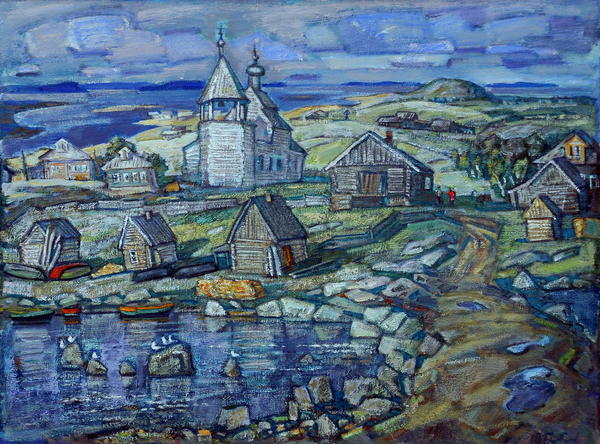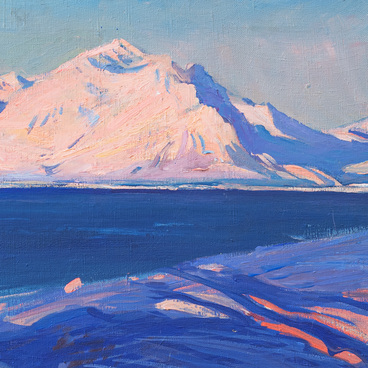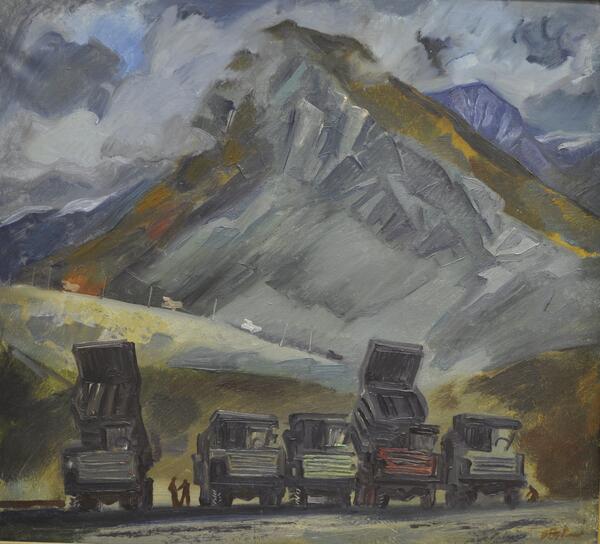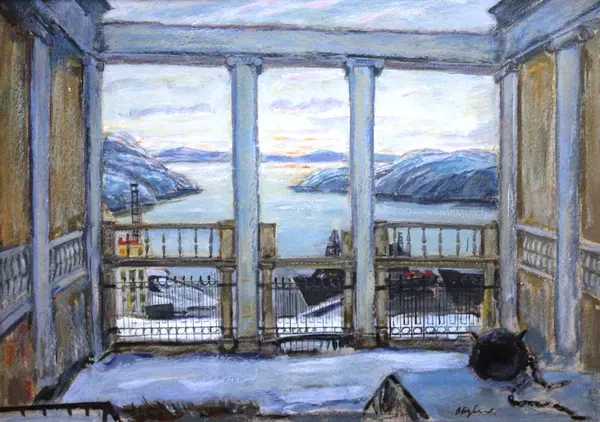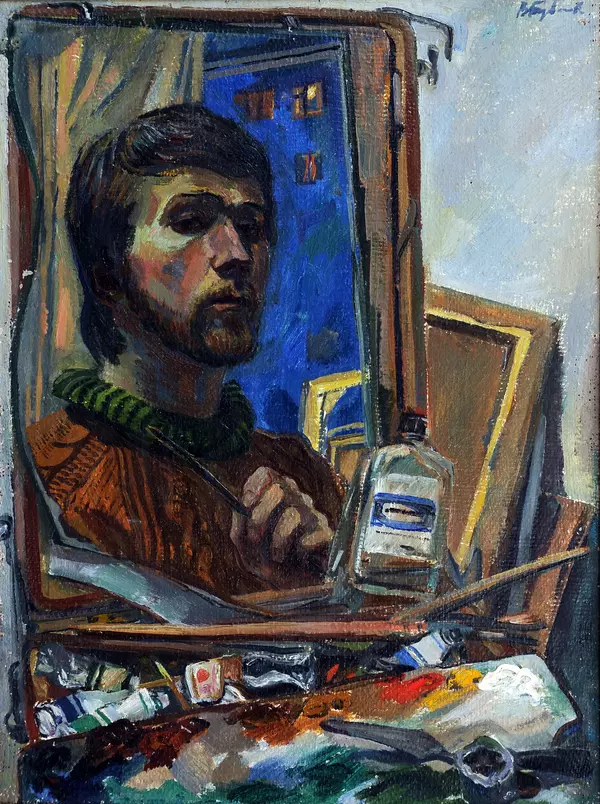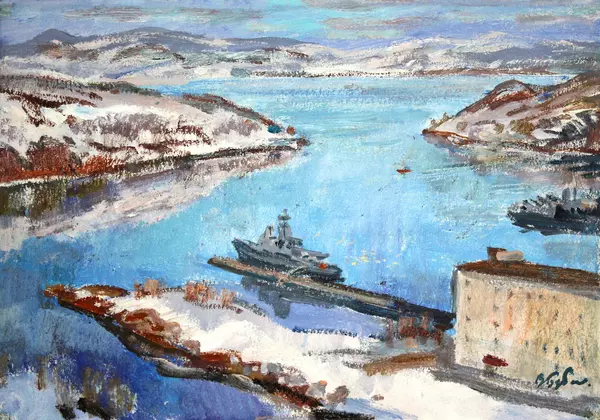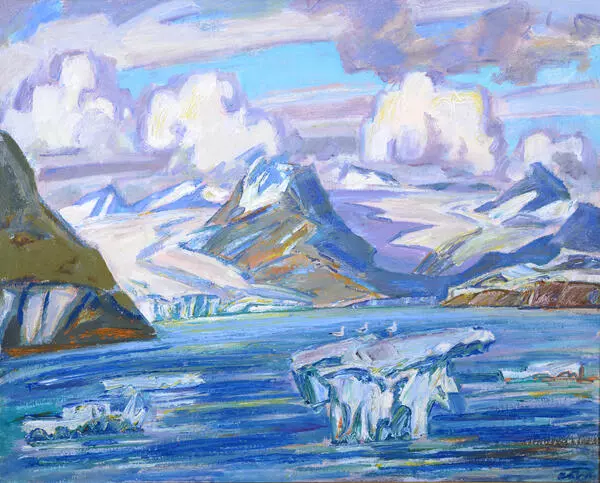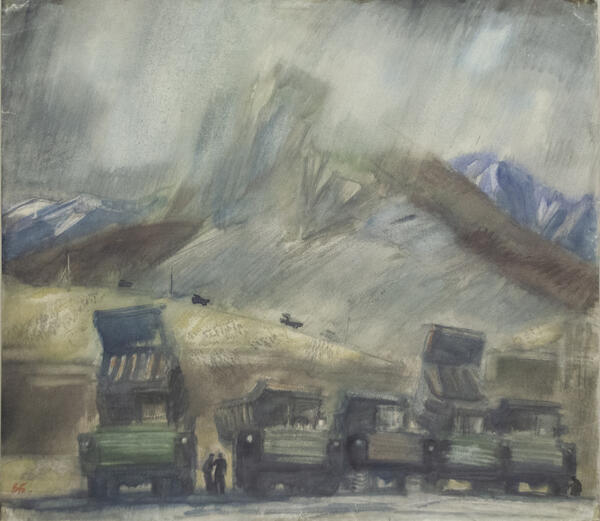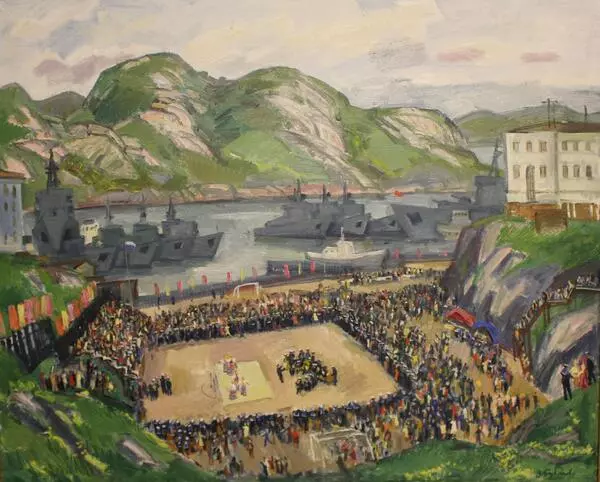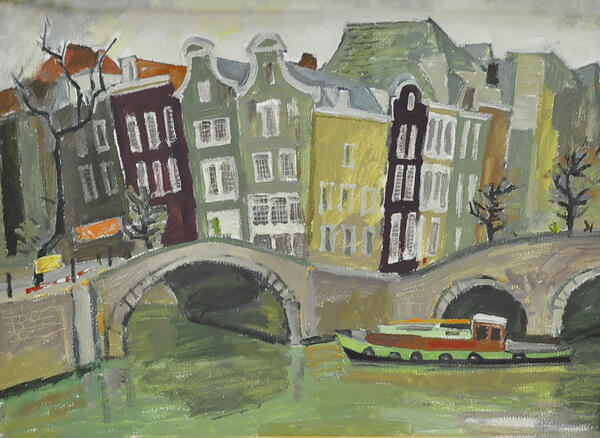Vitaly Bubentsov was born in 1944 in Murmansk. He graduated from the Leningrad Art College named after V.A. Serov in 1963 and the Faculty of Painting of the Leningrad Institute of Painting, Sculpture and Architecture named after I.E. Repin in 1972. Vitaly Bubentsov is an Honored Artist of the Russian Federation, a member of the Union of Artists of Russia, a member of the International Association of Fine Arts of UNESCO, an associate professor at the Department of Arts, Service and Tourism of the Murmansk Arctic State University.
The main theme of Vitaly Bubentsov’s work is the Russian North.
The artist paints portraits, genre paintings, and landscapes.
He traveled a lot around the Kola Peninsula, visited Siberia, Crimea, Central Asia, Holland, and Norway. The trips resulted in his artworks, which were then shown at regional, zonal, republican, and all-Russian exhibitions.
Despite the great interest in unexplored distant lands, the native Arctic, the Russian North, remains the main theme of the artist’s oeuvre. “I can’t imagine my work without my native Kola land, ” the artist admits. “And I am grateful to the fate that arranged it that I was born here.”
The color scheme of Vitaly Bubentsov’s northern landscapes is dim. However, using a modest northern palette, the artist makes his landscapes look extremely optimistic.
One of the artist’s favorite motifs is the ensemble of St. Nicholas Church in the village of Kovda. It is depicted in the picture “Nights on the White Sea”. This picture is distinguished by the unusual composition, the generalization of the image, and the expressive play of colors.
The village of Kovda is located at the mouth of the eponymous river. It was depicted on maps as early as the 15th century. The village of Kovda was the largest Pomor settlement on the Karelian coast of the White Sea. In the 19th and 20th centuries, there was a fairly large port there, which was visited by merchant ships from all over the White Sea region and from Scandinavian neighboring countries. Kovda was the center of salmon and herring fishing, as well as wood processing. There were three sawmills in Kovda, regular communication with Arkhangelsk, a post office and telegraph, and the population numbered up to 1000 people.
Today Kovda is more of a holiday with about 20 permanent residents.
The main theme of Vitaly Bubentsov’s work is the Russian North.
The artist paints portraits, genre paintings, and landscapes.
He traveled a lot around the Kola Peninsula, visited Siberia, Crimea, Central Asia, Holland, and Norway. The trips resulted in his artworks, which were then shown at regional, zonal, republican, and all-Russian exhibitions.
Despite the great interest in unexplored distant lands, the native Arctic, the Russian North, remains the main theme of the artist’s oeuvre. “I can’t imagine my work without my native Kola land, ” the artist admits. “And I am grateful to the fate that arranged it that I was born here.”
The color scheme of Vitaly Bubentsov’s northern landscapes is dim. However, using a modest northern palette, the artist makes his landscapes look extremely optimistic.
One of the artist’s favorite motifs is the ensemble of St. Nicholas Church in the village of Kovda. It is depicted in the picture “Nights on the White Sea”. This picture is distinguished by the unusual composition, the generalization of the image, and the expressive play of colors.
The village of Kovda is located at the mouth of the eponymous river. It was depicted on maps as early as the 15th century. The village of Kovda was the largest Pomor settlement on the Karelian coast of the White Sea. In the 19th and 20th centuries, there was a fairly large port there, which was visited by merchant ships from all over the White Sea region and from Scandinavian neighboring countries. Kovda was the center of salmon and herring fishing, as well as wood processing. There were three sawmills in Kovda, regular communication with Arkhangelsk, a post office and telegraph, and the population numbered up to 1000 people.
Today Kovda is more of a holiday with about 20 permanent residents.

